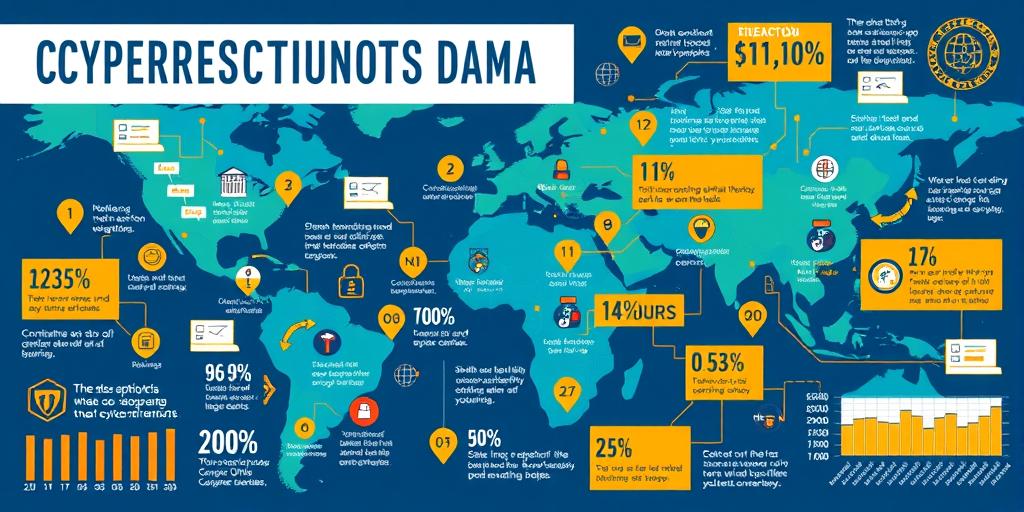In today’s hyper-connected world, cybersecurity is no longer a niche concern; it’s a fundamental necessity. From the mundane to the monumental, our digital lives are constantly under threat. So, how are the next generation of digital citizens being prepared to navigate this complex landscape? The answer, as we’ll explore, varies wildly across the globe, revealing a fascinating – and sometimes alarming – picture of how cybersecurity education is being implemented in schools worldwide.
Cybersecurity Education: A Global Overview
The landscape of cybersecurity education in schools is incredibly diverse. Some countries boast comprehensive, integrated programs from elementary school onwards, teaching children the basic principles of online safety and responsible digital citizenship. These forward-thinking nations often incorporate age-appropriate lessons on phishing scams, password management, and the importance of data privacy. In contrast, other regions lag significantly, with limited or non-existent cybersecurity education in schools. This disparity reflects differences in technological infrastructure, educational resources, and national security priorities. The result? A global digital divide in cybersecurity awareness that could have far-reaching consequences.
The Pioneers: Leading the Charge in Cyber Education
Countries like the UK, Estonia, Israel, and South Korea have emerged as leaders in integrating cybersecurity into their national education curriculums. These nations recognize the critical need to foster a cybersecurity-conscious population, and their efforts extend beyond simply teaching about viruses and malware. They implement comprehensive programs that focus on critical thinking, problem-solving, and ethical decision-making in the digital realm. These nations understand that cybersecurity isn’t just about technical skills; it’s about fostering a culture of responsible online behavior.
The Challengers: Overcoming Barriers to Cybersecurity Education
Many developing nations face significant hurdles in implementing effective cybersecurity education. Limited access to technology, a lack of trained educators, and insufficient funding are just some of the obstacles they confront. Moreover, in many regions, a pervasive lack of awareness about the importance of cybersecurity further compounds the issue. Bridging this gap requires substantial investment in infrastructure, teacher training, and public awareness campaigns. International collaborations and technology donations can play a crucial role in helping these nations catch up.
The Curriculum: What’s Being Taught?
The content of cybersecurity education in schools varies substantially. Some programs focus on basic digital literacy, teaching students about safe internet practices, responsible social media use, and recognizing online threats. More advanced programs delve into topics like cryptography, network security, ethical hacking, and incident response. The level of sophistication often depends on the age group and the specific educational institution. The most effective programs tend to adopt a holistic approach, covering not just technical skills, but also social and ethical dimensions of cybersecurity.
Beyond the Basics: Emerging Trends in Cybersecurity Education
We’re seeing a growing emphasis on integrating hands-on learning experiences into cybersecurity education. This approach uses interactive simulations, real-world case studies, and capture-the-flag (CTF) competitions to engage students and build practical skills. The use of gamification and interactive platforms is also gaining traction, making cybersecurity education more engaging and less intimidating for younger learners. This shift reflects a broader move towards project-based learning, which emphasizes practical application and problem-solving.
The Future of Cybersecurity Education
The future of cybersecurity education demands a collaborative effort. Governments, educational institutions, technology companies, and cybersecurity professionals must work together to ensure that everyone has access to quality cybersecurity education. This collaborative model will facilitate the creation of standardized curricula, the development of effective teaching resources, and the training of qualified educators. Furthermore, international cooperation is vital in sharing best practices and ensuring that cybersecurity education remains at the forefront of global priorities. Only through such concerted efforts can we bridge the digital divide and create a more secure and resilient digital future.
Successfully navigating the complexities of the digital world demands a fundamental understanding of cybersecurity principles. To equip our youth for this future, we must invest in comprehensive and accessible cybersecurity education for all. Investing in our digital future is investing in our collective security – let’s make it happen!




